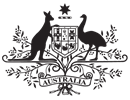The Dreyfus Files - The Age
As the spring racing carnival reaches a climax with tomorrow's Melbourne Cup, most Australians are happy to enjoy a small flutter on a horse they know nothing about. But if you were a serious punter, or an investor in thoroughbreds, you'd pay careful attention to the information that is provided in the form guide.
The form guide contains information that a punter can't get just from looking at a horse. Information like past race results, breeding, jockey and trainer.
In Australia we are adopting a similar approach in our star ratings for efficiency, with the aim of providing vital information for consumers. When you buy a new car there is a rating to tell you how fuel efficient your purchase will be. When you buy a fridge or a washing machine there is a rating to tell you how much electricity the product will use.
Similarly, the business sector wants to know how energy efficient their office building is likely to be when thinking about buying or leasing office space.
From tomorrow, most businesses selling or leasing large commercial office space (over 2000 square metres) need to provide a Building Energy Efficiency Certificate. The Building Energy Efficiency Certificate includes a building energy efficiency rating, an assessment of the lighting energy efficiency and guidance on ways to improve a building's energy efficiency.
Recent studies show that making public information on energy efficiency has real value for the market. For example, in the Melbourne central business district, buildings with high energy efficiency ratings can achieve returns 25 per cent higher than lower rated buildings.
Using energy efficiency information makes good business sense as well as helping the environment.
Building Energy Efficiency Certificates will help ensure businesses are well informed by providing a handy ''form guide'' to the energy efficiency of commercial office buildings.
Lighting typically accounts for about 25 per cent of the energy use in an office building, and up to 40 per cent of electricity consumption. Improving the efficiency of lighting is a key element of the move to a clean energy future.
Making sure potential buyers and tenants have information on installed lighting systems is a change that helps make this happen.
It also helps potential buyers or tenants work out if the system should be replaced, upgraded or left as is, potentially saving thousands of dollars from being wasted.
Mandatory disclosure of energy ratings for commercial buildings is a good thing. It gives those looking to rent or buy commercial property a clear picture of their future energy costs and where energy improvements can be achieved to save money.
Twelve months ago I announced that this scheme would be introduced on November 1, 2011. Since that announcement we have been working closely with industry on these disclosure measures to assist understanding and compliance. Updates about energy efficiency disclosure for commercial buildings can be found on a dedicated website: www.cbd.gov.au
Information alone will not address our energy efficiency challenge. But it is a key way to support change. Addressing climate change is a big task in which all of us have a role to play. We need the best information we can to do it in the most efficient way.
Without a reliable form guide, property owners and tenants may be backing the wrong horse.



